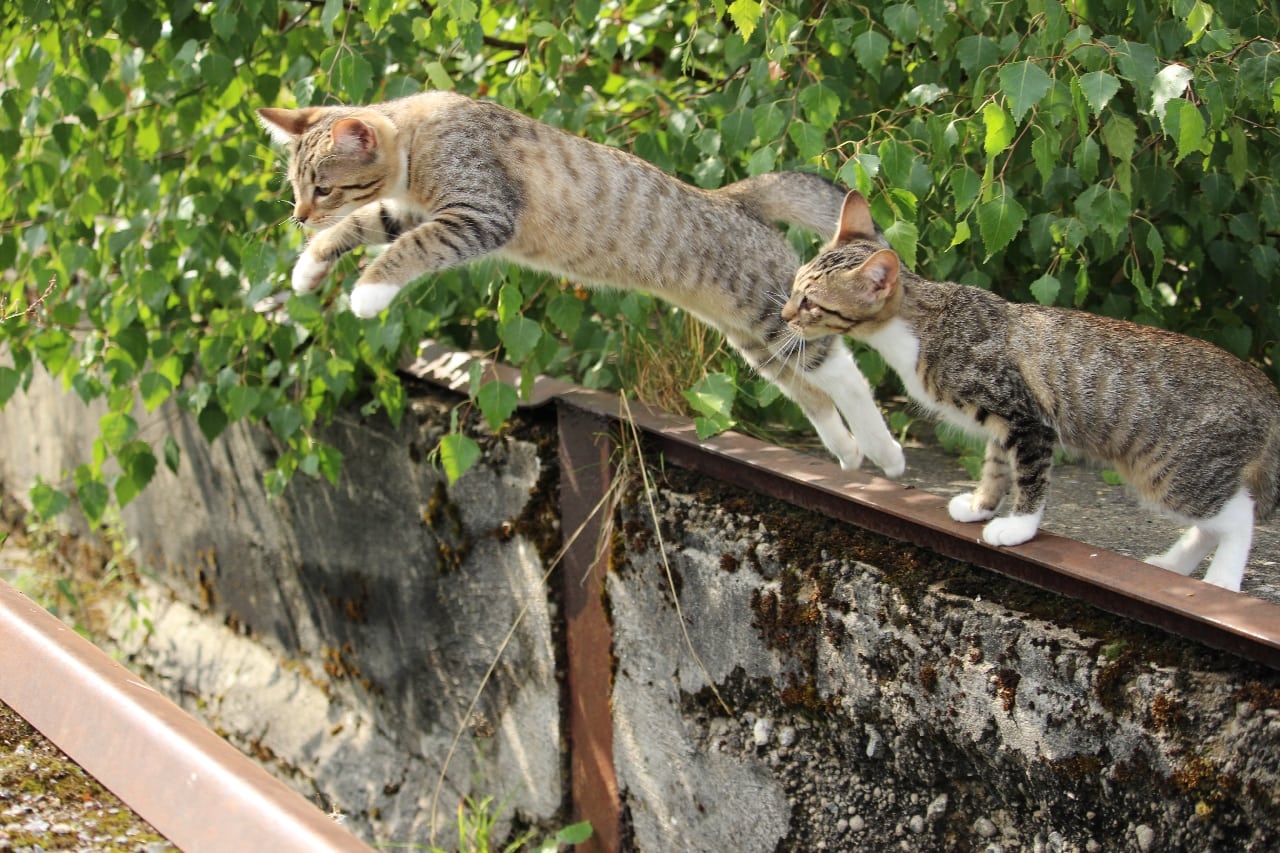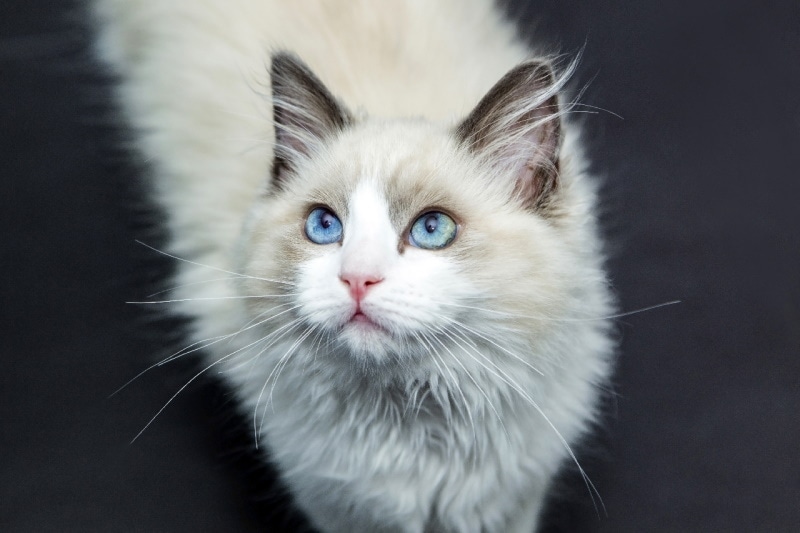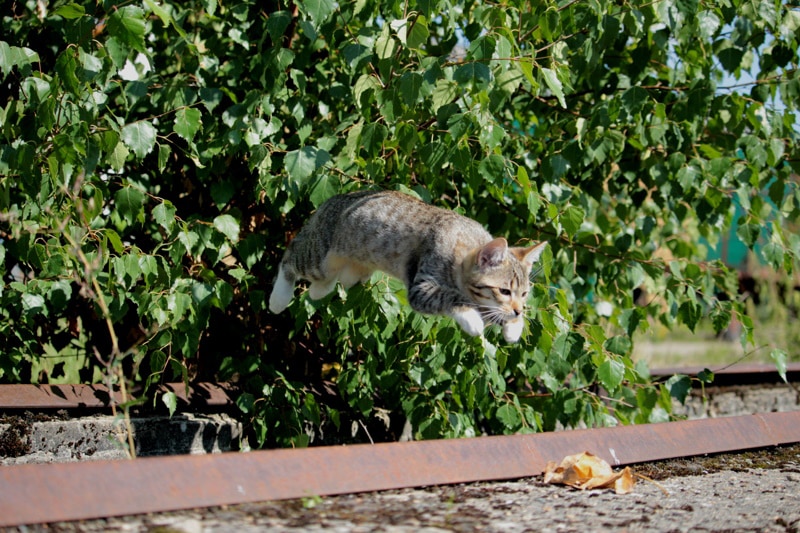Why Do Cats Always Land on Their Feet? Science-Based Facts & FAQ

Updated on

Many people might have heard that cats always land on their feet. After all, they are quite graceful creatures with incredible agility. Unfortunately, cats do not always land on their feet. Depending on the circumstance, cats can get hurt falling from various heights.
However, cats’ anatomy does help them try to “right” themselves when they fall, leading people to believe that they will always land on their feet. Read on to learn more about how cat’s land on their feet.
The Cat-Righting Reflex
The cat’s ability to land on their feet is thanks to their “righting reflex” 1. When cats fall, their vestibular systems (located in their inner ears) kick into action and let them know how they’re positioned. Cats will then try to position their head in the upright position. By positioning their head in the upright position, they can prevent themselves from landing in a way that would harm them.
In addition, when a cat begins to drop from a height, they draw their front paws close to their body while at the same time extending their hind legs, which allows their upper body to rotate in one direction while their hind legs move in another. Once cats right themselves, they do the movement in reverse by sticking out their front legs and tucking their back ones in a bit to bring their back paws into position to break the fall.
Their vestibular systems are not the only features that help cats land on their feet. Their spinal cord plays an important role as well. Their spine consists of approximately 30 vertebrae, making it incredibly flexible. They arch their backs before beginning the rotations that align them with the ground 2. They also spread their legs just a bit before they land to cushion the fall.

Why Don’t Cats Always Land on Their Feet?
Although cats have some physical features that help them right themselves before they hit the ground, they do not always land on their feet. Height plays a larger role in this. Cats suffer more injuries when they fall from distances of under 7 stories 3. They often suffer fewer injuries after falls from higher distances.
Cats gain the most speed at the beginning of falls and then reach a point where air resistance takes over, and things begin to even out to the point where no further speed is gained, making feline landings easier when there’s a bit of extra time to allow resistance from the air to provide an assist. Cats have survived serious falls, like from the 32nd floor of a high high-rise building 4.
It is important to note that we should never try to “test” how quickly cats can right themselves to land on their feet. Older children might think it would be a “fun” experiment to hold a cat upside down and drop them to see how quickly they flip themselves. But this is not safe or fun for the cat. Never try to test a cat’s righting reflex.
Frequently Asked Questions
When Do Cats Develop the Ability to Land on Their Feet?
Cats generally develop the skill during their first 3 or 4 weeks of life, and they’re usually skilled at landing on their feet when they’re around 6 or 7 weeks old.
What Is High-Rise Syndrome?
High-rise syndrome refers to the injuries that cats often receive because of a fall from a considerable height. Cats that fall generally sustain injuries, often to the chest area. Other injuries commonly seen after falls include fractures, traumatic luxations, and shock.

Do Cats Generally Survive Falls?
Yes. Most cats that make it to the veterinarian after falling do just fine in the long term. However, if you have witnessed your cat falling from a great height, it is always a good idea to call your vet. They will be able to tell you what signs to look for that could indicate an injury. They may also ask you to bring your feline for an examination.
Are There Physical Factors That Prevent Cats From Landing on Their Feet?
Overweight cats have difficulty maneuvering their bodies, which can make it hard for them to right themselves and is another reason to ensure cats stay nice and trim.
Conclusion
Cats don’t land on their feet every time they fall, but they manage to survive most falls, thanks to their righting reflexes and incredible bodies. As soon as a cat begins to tumble, their vestibular system lets them know they’re off balance and provides information about their orientation in space.
Once cats have determined where they need to be headed, they begin a complex series of graceful motions that work together to bring their bodies around so they land on their feet. While it’s true that cats are incredibly adept when it comes to righting themselves, many sustain injuries because of these sorts of falls, but a surprising number manage to escape unscathed after serious plunges.
See Also:
Featured Image Credit: JumpStory











